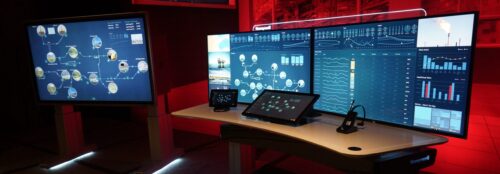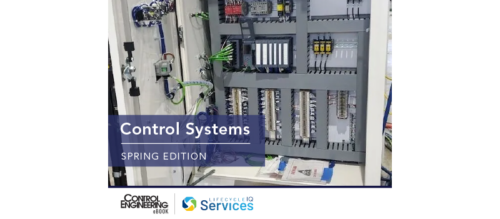Making industrial control system solutions more adaptable
Industrial control system (ICS) solutions need a new architecture and philosophy is required to be more adaptable to changing environments. Six methods are highlighted.
Learning Objectives
- A new architecture and philosophy is required for industrial control solutions in the Industry 4.0 age.
- Reinvention is needed because of Industry 4.0’s potential to change how information is processed and gathered.
- Using digital twins, machine learning (ML) and artificial intelligence (AI) can help leverage digital transformation.
Dynamic and intuitive machines are transforming the way businesses function in every industry. Industrial control solutions have traditionally not been known for easy adaptation or inexpensive changes. Part of this has been related to the legacy structure of layered control technology. The existing technology monolith has dramatically improved overall performance but has also added a complexity that needs to be managed. To flexibly adapt, a new architecture and philosophy is required.
Megatrends and disruptions
Control systems have always played a crucial role in manufacturing, providing advancements in mechanical and or pneumatic systems. Now, Industry 4.0’s digitalization relies on intelligent, connected systems and has a potential to generate $3.7 trillion over the next decade. The companies that embrace and actively manage digitalization will succeed and find ways to add value to the enterprise. New technology is not the solution. The key is to find the transformations that add value and then leverage technology intelligently.
Six ways to turn digital transformation into business value
The inability to adapt to changing conditions, difficulty in managing multiple optimization goals and inconsistency are some limitations of existing control systems. Translate digital transformation into significant business value in six ways.
- Using control templates: We identify the control strategies to meet client functional requirements and leverage these as flexible templates to right size the engineering effort. We worked, for example, with Suncor on well pad development using modular type package (MTP) concept resulting in an estimated cost savings of more than 50%. This project also was a winner of two Suncor President’s Operational Excellence awards.
- Reinventing control algorithms: We are systems integrators but, more importantly, process control experts. We are active members of varied industry groups. There is a strong need for open systems with re-engineered solutions and have established a function block library, leveraging decades of experience over a wide range of vertical markets.
- Using real-time cost control: Nothing stimulates highly effective decision making quite like an informed workforce. Integrating real-time variable costs into operations screens results in a step change in cost performance and an understanding of cost drivers. In places where the costs can be highly variable like power and natural gas, this can be very valuable.
- Using the digital twin: Companies that leverage and actively maintain their engineering design data use data in more innovative ways. They can provide easy access for ongoing learning and integrate it into optimization and simulation models to apply and grow their intelligence.
- Using machine learning (ML) and artificial intelligence (AI): Machine learning and artificial intelligence (AI) can be applied effectively to transform data into actionable intelligence and into autonomous operations. Leveraging AI to support intelligent control systems is key to realizing the opportunity that Industry 4.0 brings. A recent study confirms 50% of companies that embrace AI over the next 5 to 7 years may double their cash flow. And manufacturers that implement intelligent systems achieve 17% to 20% productivity gains.
- Using operations as process managers: We also see a shift for the operations team to be the manager of the process, rather than just the “operator” of the process. In places where one product is manufactured in multiple locations, sharing technical and business data allows for a global optimization of the assets.
The way forward for manufacturers
To lead the way forward, an ecosystem of operating companies, technology providers and service companies need to identify and execute breakthrough shifts in how the process and manufacturing industries are managed. This thinking is underway and gaining traction. For this new industrial revolution, only reinvention will suffice, these are not simple incremental changes.
Bridget Fitzpatrick is the global technical lead for process automation at Wood, a CFE Media content partner. This article originally appeared on Wood’s website. Edited by Chris Vavra, web content manager, Control Engineering, CFE Media and Technology, cvavra@cfemedia.com.
MORE INNOVATIONS
Keywords: Industry 4.0, industrial control system
CONSIDER THIS
Incremental or radical: How is your company changing industrial controls in the Industry 4.0 era? Is it fast enough?
Original content can be found at www.woodplc.com.
Do you have experience and expertise with the topics mentioned in this content? You should consider contributing to our CFE Media editorial team and getting the recognition you and your company deserve. Click here to start this process.





